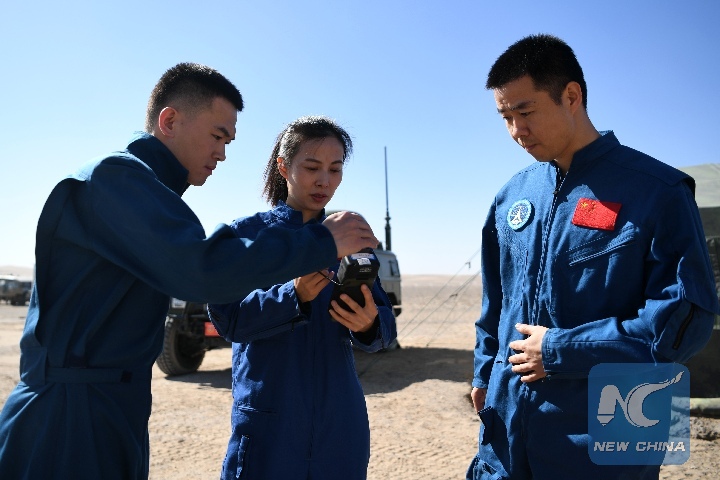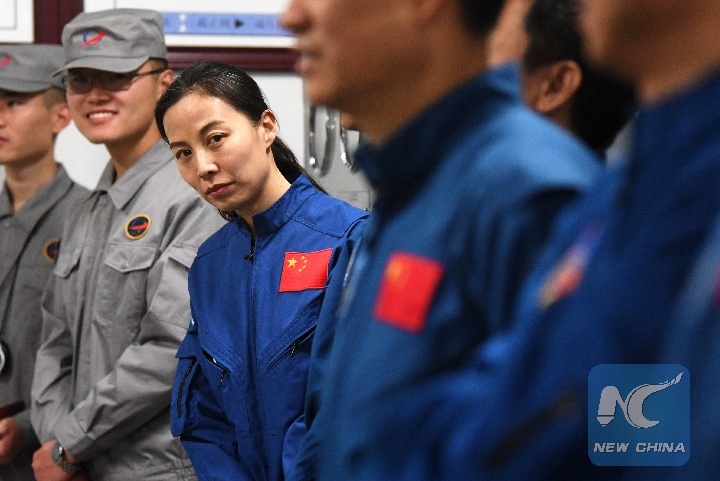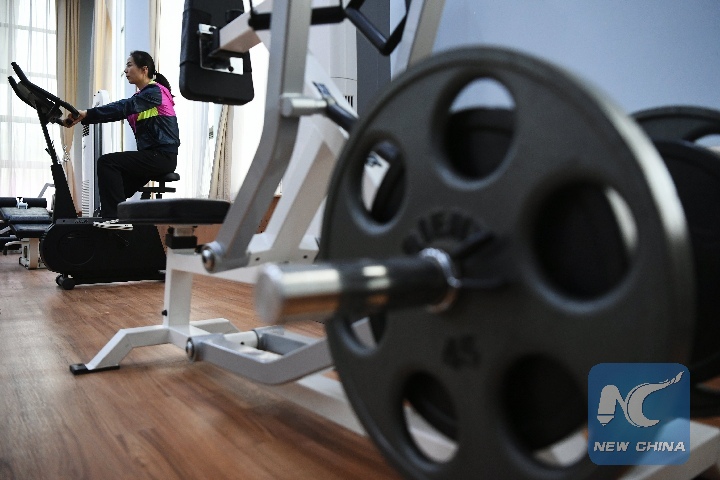
Wang Yaping (R2) is escorted to the desert. (Xinhua photo/Chen Bin)
Wang Yaping is no stranger to challenges. In her early twenties she was already a pilot for the PLA when she saw Yang Liwei, the first Chinese man in space, on TV.
While proud of her country, she couldn't help thinking "when will China have its first woman?" From that moment she set her sights on the stars and in 2013 fulfilled her dream, becoming the second Chinese woman in space.
Not content with smashing the glass ceiling to reach outer space, Wang Yaping's next goal is clear. "My greatest wish is to go to space one more time, maybe even go to the moon," she said.
In order to return to the heavens, Wang must first prove she can survive here on earth in all kinds of hostile environments. This time, it was in the arid conditions of the Badain Jaran Desert, northwest China.
Wang, 38, is fondly known as Taikong Jiaoshi, or "the space teacher" because of her televised science lesson from the Shenzhou-10 spacecraft in 2013.
With her signature ponytail and wide smile, she has become something of a household name since she delivered China's first space lecture to students on Earth on board the Shenzhou-10 spacecraft in 2013.

Before the training, Wang discusses the plan with her colleague. (Xinhua photo/Chen Bin)

Wang tests the satellite phone before setting out for the training. (Xinhua photo/Chen Bin)

Wang takes part in a desert survival training, which is designed to prepare taikonauts with the capacity to survive in the wilderness should their re-entry capsule land off target. (Xinhua photo/Chen Bin)
"The toughest part of the training is the harsh environment. Sometimes it was so windy and dusty that we couldn't see each other even they were just a few meters away," she said.

Wang checks the supplies in the mockup re-entry pod. (Xinhua photo/Chen Bin)
"All we had was limited amount of water, food and other supplies," Wang said.
The taikonauts trekked to a rescue spot about three to four kilometers from their original location.
"To conserve energy on the way to the rescue spot, we must travel light, but at the same time we must ensure that we had enough supplies. So it was difficult to choose what to take and what to leave," she said.

Wang in the desert. (Xinhua photo/Chen Bin)

Wang at an emergency escape training session on a launchpad at Jiuquan Satellite Launch Center. (Xinhua photo/Chen Bin)
Taikonauts have begun comprehensive training for going to China's space station, which is scheduled to become fully operational around 2022.

Wang jogs with Chen Dong, one of the other two taikonauts on board the Shenzhou-11 in 2016. (Xinhua photo/Chen Bin)

Wang at the gym. (Xinhua photo/Chen Bin)
Taikonauts are subjected to a panoply of physical, psychological and theoretical training. Taikonauts must also pass tests in a pressure chamber, an aerotrim, a centrifuge and an underwater "spacewalk" simulation.

Wang walks back to her dormitory after training. (Xinhua photo/Chen Bin)

